Lightly Curried Lamb, Cabbage, and Barley Soup
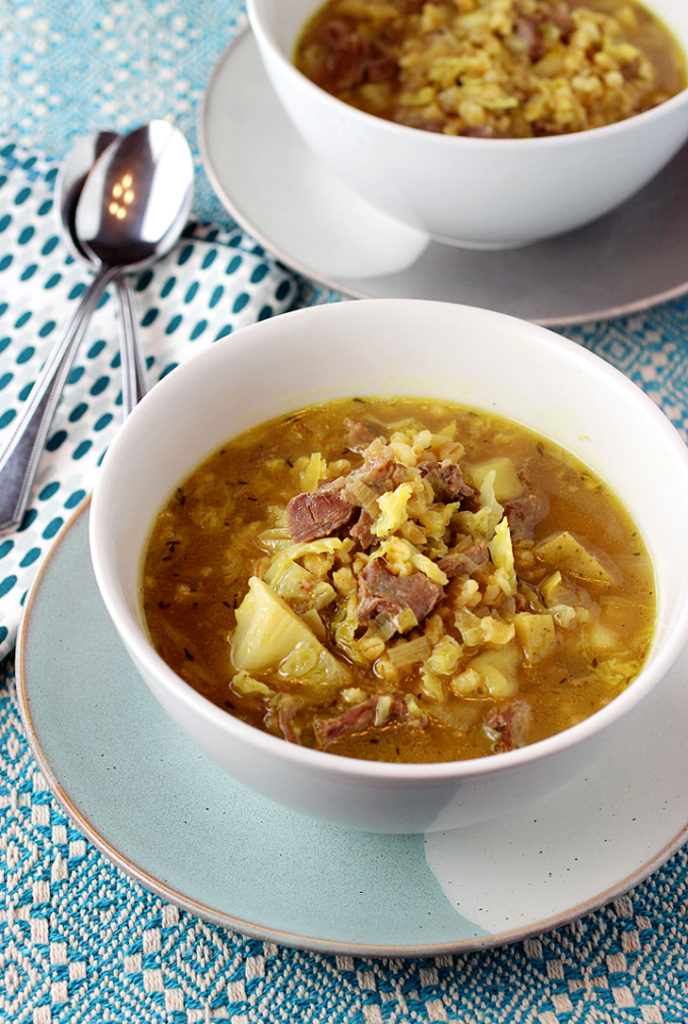
I joke that my husband likes to put together elaborate charts. Of his weekly workouts. Of his grilling exploits. Of, well, you name it.
Of course, he’ll then promptly misplace them, making them an exercise in futility in the end.
So, it comes as no surprise that in the early days of shelter-in-place, when everyone was growing green onions in a glass of water and attempting their first misshapen sourdough loaves, all panicked that it might very well be the only food they could lay their hands on, my husband suggested making an elaborate chart listing everything in our pantry in case we had to start rationing.
I just rolled my eyes.
Because I knew that with just the bags of dried beans and grains on our shelves alone, we had ample food — and good food — for months on end.
After all, that’s one of the greatest things about grains such as barley, farro, corn, quinoa, and oats. They are high in fiber, making them very satiating even in modest servings. Plus, they are loaded with vitamins, minerals, and antioxidants.
On top of that, they’re a breeze to cook, and can fit into any meal or snack, no matter what time of day or year.
Need further convincing? Just pick up a copy of the new cookbook, “Grains for Every Season: Rethinking Our Way with Grains” (Artisan), of which I received a review copy.
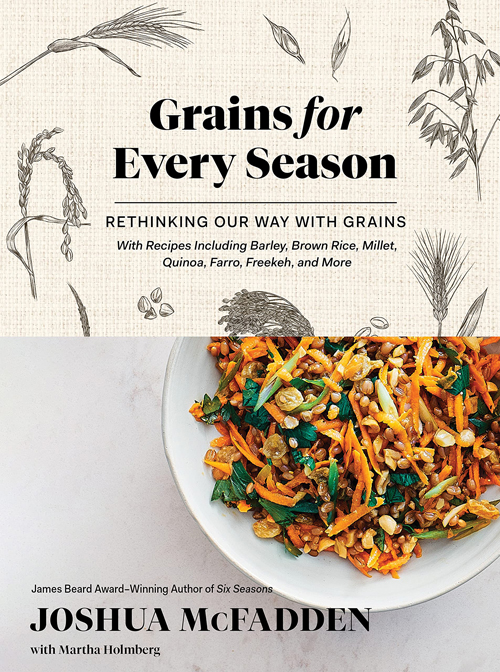
It’s by Joshua McFadden, founder of Submarine Hospitality in Portland, OR, where he owns Ava Gene’s, Cicoria, Takibi, and Tusk. He’s also bringing new life to a 50-acre Berny Farm in Springdale, OR. The book was written with Martha Homberg, former editor-in-chief of Fine Cooking magazine.
As McFadden notes, this cookbook doesn’t include recipes for every grain imaginable. Instead, he’s honed in on the ones that he believes are the most versatile in the kitchen.
They shine in recipes such as “Peanut Butter-Barley Cookies with Add-Ins,” “Crispy Quinoa Beet Cakes,” “Toasted Rye Cabbage Rolls,” “Freekeh Falafel,” and “Whole Wheat Pasta with Crab, Cream, Olives, and Habanero.”
With the recent rains and gloomy skies, I couldn’t resist trying “Lightly Curried Lamb, Cabbage, and Barley Soup.”
Think of it as a sit-up-and-take-notice riff on the usual beef barley soup.
Its foundation is built upon lamb shanks that get simmered in white wine and water until the meat is fall-off-the-bone tender, and the resulting broth is incredibly rich and meaty tasting. Depending upon the size of your lamb shanks, this can take anywhere from 1 to 3 hours, so plan accordingly. Mine were nicely done at the 2-hour mark.
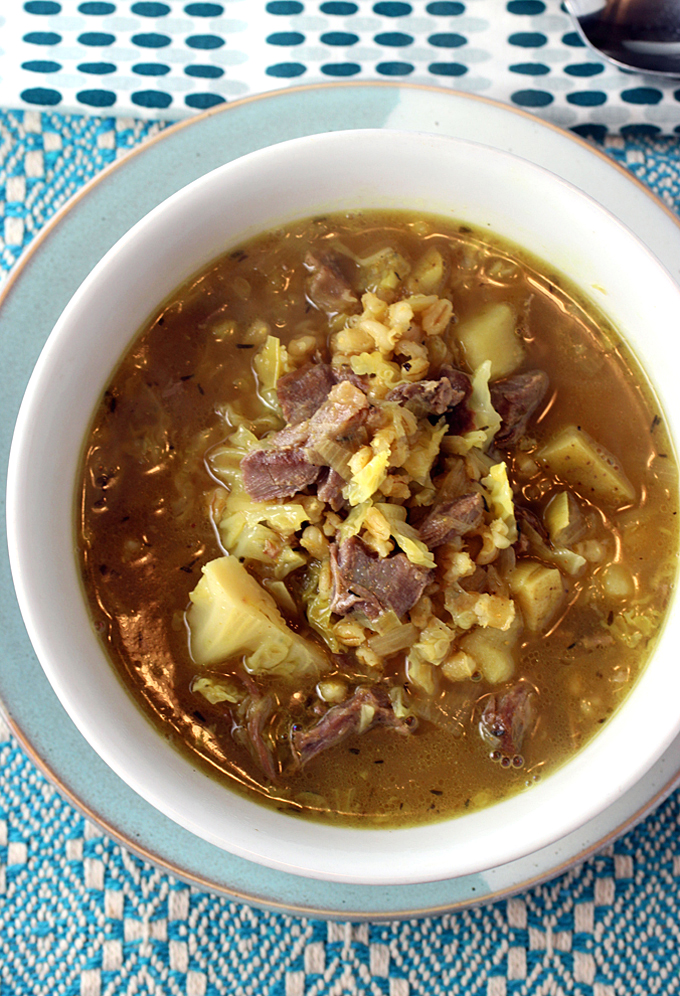
Leeks add sweetness to the broth, and thyme, rosemary, and garlic depths of flavor. The barley cooks right in the lamb broth that’s blended with some chicken broth, along with a diced potato and a load of shredded cabbage.
A measured amount of curry powder adds warmth, earthiness, a deeper golden cast, and a certain je ne sais quoi to the soup, without turning it into a curry dish in which the spice mix is the overriding star. Instead, it is the wonderful taste of the lamb that truly carries this soup. I used mild curry, as McFadden notes that’s his preference. But he also encourages you to go for a hot one if you like a more fiery spice level.
The meat from the lamb shanks is shredded into bite-sized pieces and added back into this very hearty soup. It’s a stick-to-your-ribs kind of soup, loaded with meat, grain, and veggies to the point that you will have to add more chicken stock the next day to any leftovers to loosen everything up more.
That’s because the potatoes and the nutty, wonderfully, slightly chewy barley soak up the broth like a sponge, drinking in all its flavors and becoming even more delicious as a result.
This is one comforting and nourishing bowl to tuck into.
And no elaborate charts are required to do so.
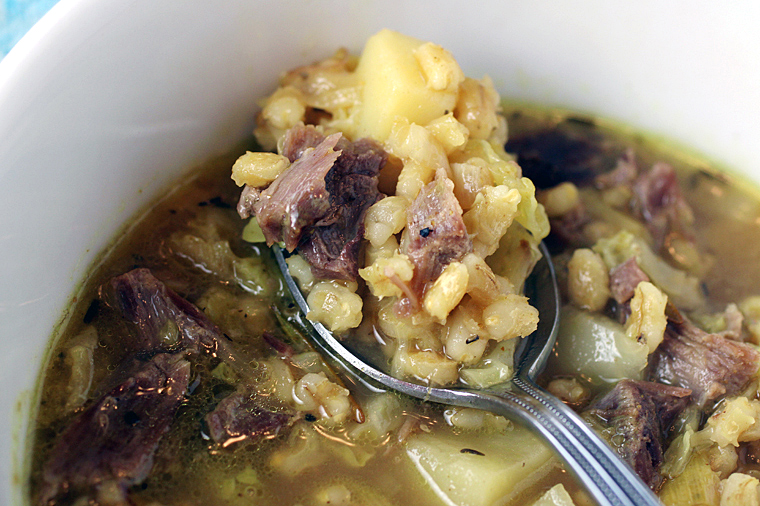
Lightly Curried Lamb, Cabbage, and Barley Soup
(Makes 3 quarts; serves 8)
Extra-virgin olive oil
3 pounds meaty lamb shanks
Kosher salt and freshly ground black pepper
1 cup dry white wine
2 quarts chicken broth, homemade or low-sodium store-bought
1 large leek, white and light-green parts only, thinly sliced and well rinsed
One 5-inch sprig rosemary, or 1/2 teaspoon dried
Three or four 4-inch sprigs thyme, or 1/2 teaspoon dried
5 garlic cloves, smashed and peeled
2 tablespoons mild or hot curry powder
1 cup pearled barley
4 cups very thinly sliced white or savoy cabbage
1 large potato (like Yukon Gold), cut into 1-inch cubes
Heat a glug of olive oil over medium-high heat in a pot that’s large enough to hold the lamb shanks. Season the lamb shanks with salt and pepper, add them to the pot, and brown them on all sides, taking your time to get a nice bit of color, about 10 minutes total. Reduce the heat if the lamb seems to be getting too brown too fast.
Pour in the wine and simmer until the wine has reduced to about 1/2 cup, then add the broth. Adjust the heat to a lively simmer, cover, and cook, until the lamb is very tender and literally falling off the bone. Make sure you’re not actually boiling the shanks, which could toughen the meat. Depending on the size and density of your lamb shanks, this could take 1 to 3 hours. When the lamb is cooked, remove it from the broth, let cool, then pull the meat from the bones. Cut or pull the meat into bite-size pieces. Skim any visible fat off the broth.
Heat 2 tablespoons olive oil in a large pot or Dutch oven over medium heat. Add the leek, a pinch of salt, a few twists of pepper, and the sprigs or rosemary and thyme. Cook, stirring frequently, until the leek starts to soften and become fragrant — but not at all browned — about 3 minutes. Add the garlic and curry powder and cook for another minute or so, until the garlic is soft but not browned.
Add the skimmed lamb broth and the barley to the leeks and simmer for 10 minutes. Add the cabbage and potato and cook until the cabbage is very tender and sweet and the potato and barley are fully tender when you take a bite, another 30 minutes or so.
Add the lamb and simmer for about 5 minutes, then taste and adjust the seasoning with more salt or black pepper (if you’ve used canned chicken broth, the soup may already be fairly salty).
Serve hot on a cold day.
From “Grains for Every Season” by Joshua McFadden with Martha Holmberg
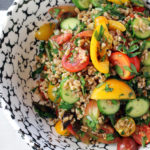
More Joshua McFadden Recipes to Enjoy: Farro and Tomato Salad with Fish-Sauce Vinaigrette
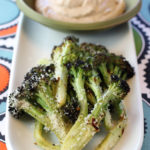
And: Charred Broccoli with Tonnato, Pecorino, Lemon, and Chiles
